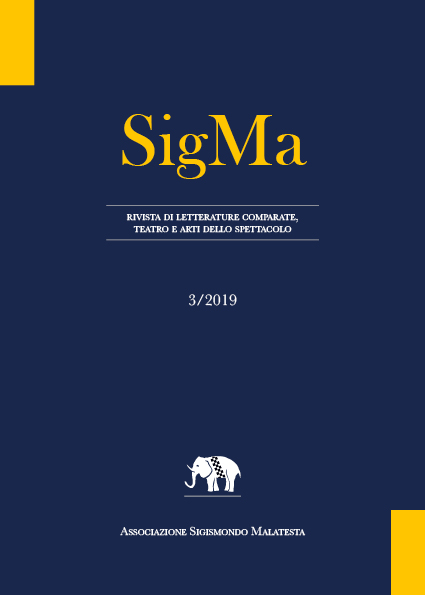Sulla follia di Maupassant: l’‘étude de cas’ de “Le Horla”
Abstract
Il primo gennaio del 1892, Guy de Maupassant tenta il suicidio nella sua casa di Cannes con un tagliacarte dopo avere provato a spararsi alla tempia. A trovarlo è il suo cameriere François Tassart, lo stesso che aveva provveduto a togliere i proiettili dall’arma dopo aver notato alcuni anomali comportamenti dello scrittore. La decisione di portare Maupassant a Parigi e sottoporlo alle cure del Dr Émile Blanche è pressoché immediata, all’indomani del suo ingresso nella casa di cura di Passy la notizia giunge ai principali quotidiani francesi dando luogo a un vero e proprio dibattito sulla natura della sua follia, sulle possibili cause e soprattutto sugli indizi che se ne potevano rintracciare nell’opera letteraria dell’autore. Questo contributo mira ad una ricostruzione di tale dibattito in Francia negli anni del suo internamento (1892-1893) e a una ricognizione degli studi medici che nel corso del XX secolo hanno proseguito l’indagine del profilo clinico di Maupassant facendo di uno dei racconti più celebri dell’autore, Le Horla, un vero e proprio documento clinico. Attraverso l’analisi di questo caso specifico si vorranno proporre alcune considerazioni sull’utilizzo medico delle forme letterarie negli ultimi anni del XIX secolo e nella prima metà del XX.
Downloads
SigMa pubblica in internet, ad accesso aperto, con licenza:
|
|
CCPL Creative Commons Attribuzione |
L'autore conserva il copyright sul suo contributo, consentendo tuttavia a chiunque "di riprodurre, distribuire, comunicare al pubblico, esporre in pubblico, rappresentare, eseguire e recitare l'opera", purché siano correttamente citati l'autore e il titolo della rivista. L’autore, al momento della proposta di pubblicazione, è inoltre tenuto a dichiarare che il contenuto e l’organizzazione dell’opera è originale e non compromette in alcun modo i diritti di terzi, né gli obblighi connessi alla salvaguardia di diritti morali ed economici di altri autori o di altri aventi diritto, sia per testi, immagini, foto, tabelle, sia per altre parti di cui il contributo può essere composto. L’autore dichiara altresì di essere a conoscenza delle sanzioni previste dal codice penale e dalle leggi speciali per l’ipotesi di falsità in atti ed uso di atti falsi, e che pertanto Reti Medievali è esente da qualsiasi responsabilità di qualsivoglia natura, civile, amministrativa o penale, e sarà dall'autore tenuta indenne da qualsiasi richiesta o rivendicazione da parte di terzi.

